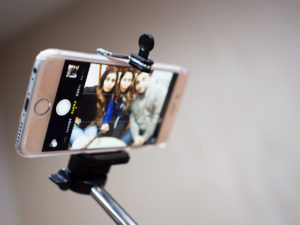 Of all the supernatural creatures in the literary realm, perhaps none has held such a place in the psyche of the western hemisphere as the Vampire, whose combination of carnal attraction and undead horror allows popular culture to constantly see what it wants in the Rulers of the Night. They are old and stalwart in their place in stories and myths and, while they have undergone some changes in certain times, they often return to some basic principles of strengths and weaknesses. The problem is, what happens when the world turns one of those frailties into a ubiquitous fact of modern life?
Of all the supernatural creatures in the literary realm, perhaps none has held such a place in the psyche of the western hemisphere as the Vampire, whose combination of carnal attraction and undead horror allows popular culture to constantly see what it wants in the Rulers of the Night. They are old and stalwart in their place in stories and myths and, while they have undergone some changes in certain times, they often return to some basic principles of strengths and weaknesses. The problem is, what happens when the world turns one of those frailties into a ubiquitous fact of modern life?
One of the constants in the Vampire myth (as well as some pertaining to ghosts and other spectral entities) is the ability to change one’s appearance and/or hide oneself in plain sight. One of the often-cited weaknesses of the blood-sucking undead is the inability to cast a reflection, and this often extends to any apparatus that would capture their photograph. This was an interesting mechanic of storytelling back when developing film was a lengthy procedure and it was unlikely that complete strangers would take your photo at any moment. Even as little as two decades ago, someone could attribute the absence of a person in a picture as a trick of the light or a problem with the camera.
The fact is modern culture has been radically changed by the rise of social media and the ubiquity of the cameras on every personal electronic imaginable. (Including the things we carry around in our pockets that we still call “phones†even though I can count the number of calls I’ve made with mine this week on one hand, but I digress.) The chances of a person communicating via camera at least once during the week is high, and that chance raises exponentially if they live in a metropolitan area. If you also consider the number of times a person is captured on some sort of security device and in the background of a stranger’s photo then you’ve got a lot of people trying to rationalize why someone isn’t showing up on any of the screens. This isn’t simply a pestering concern for the modern undead blood-sucker, it’s a complete change to the landscape of their everlasting lives.
A vampire’s greatest strength is that it is a predator that mimics its prey, hiding in plain sight among the mortals it feeds upon. Crosses no longer adorn the wall of the majority of households and simply explaining that they work nights were mundane ways to get around some of the more obvious signs of what they really are. Cameras were easy enough to avoid even as they became more popular as the years passed, because who among us isn’t a little camera shy? But that was when a photograph was a small event and it was rarer still to be featured in a video recording. Now, though, a person can’t go five minutes without being captured on some device.
Simply put, the apex predators of the night have been undone by the vanity of mortals.
If you consider that Vampires are often depicted as city-dwelling creatures, then the common security measures of a post-9/11 world guarantee that a person will be photographed a few times per day. Combine this with the presence of consumer electronics outfitted with cameras (like the one I’m typing on right now) and the undead have some serious work cut out for them. Using your otherworldy charm to lure a mortal from the club to your bed and ultimately to their grave? Not without a photo of the two of you together that will get published on any number of profile pages. Want to go into an office building to have a high-stakes corporate showdown to further establish your centuries-old financial position? Then smile for the camera, because you aren’t getting upstairs without a pass. Want to take an Uber to said high-stakes meeting? Well the driver’s camera just captured one strange ride.
So bad news for the fanged monsters of the night, because cameras are everywhere that you are. The modern day has populated the world with would-be Van Helsings, armed only with iPhones and Instagram, and they can see the monsters around them. Actually, they can’t. And that’s the problem.
What modern conveniences do you think is an inconvenience for those things that go bump in the night? Leave a comment below!
Fandible.Com is now on Patreon! If you enjoy our weekly blog posts and actual play podcasts, please consider supporting us.



Well obviously the secret vampire government is making sure everything is fine.
Everybody knows that cameras automatically apply a filter to put a reasonable facsimile of any vampire that might be missing from a photo.
Makeup. It takes some skilled work, preparation and effort but is frankly merely a faff. High stakes meeting. Prep beforehand. Dingy club with poor lighting. Likewise. Uber user? Camera on the fritz (again). Bodycam, they’re always turned off. As ever, it’s the slow and the dead that don’t adapt. The undead merely organise. Meanwhile, those privacy laws still need pushing.
Hair dye. Contacts. Make-up. Gloves. Lipstick. Foundation. Eyeliner. Spectacles. Sunglasses.
Buckle in everybody because I’m about to teach you all how to fuck with your GM in your next vampire game.
Anyone with even a passing knowledge of vampire lore knows of many of the classical quirks of vampires. Their bloodsucking nocturnal ways, their weakness to Sunlight, fire, crosses, and silver, and of course that they don’t show up in films or reflections. What I’m going to do is demonstrate the reason that vampires don’t have a reflection, can’t be caught on camera, but would have no problem with today’s abundance of cell phone cameras.
Before I talk about cameras I’m actually going to talk about another one of the vampire’s traits; their relationship with mirrors. Everyone knows vampires don’t have reflections. But what if I could tell you why they don’t have reflections? This goes back into how mirrors have been traditionally made. Back in 500 AD the first mirrors were made in China by combining silver and mercury, and then boiling the mercury off, leaving only the silver. Humans experimented with the best ways to create reflective glass, but by the 1900s the process of silvering glass was the most common practice for mirrors. There is nothing inherently anti vampire about mirrors, but the silver they are backed with is something that hurts vampires, so it’s no stretch to think that their image is not reflected in it.
Now let’s talk about photography. Photographs are broadly taken by utilizing materials that change their size and shape depending on their exposure to light. Can you guess what materials were popular to use in this process? Silver coated copper plates featured prominently in the first cameras, and Daguerreotype cameras used them as well. As history progressed the silver moved to the actual film as opposed to the plates, but the our silver theory remains intact. Vampires fail to appear in photographs because of the silver present in the film.
Now let’s move up to 2017. You’ve probably noticed that your cell phone does not contain film. Sure enough in the age of the digital camera, the only silver involved in the process is in the circuit board. Therefore there is no reason a vampire wouldn’t show up on a digital camera. They have just as much access to snapchat as the rest of us.
A counter point to Sam’s essay.
I see a slight flaw in this theory or reasoning that if it is the silver being the main cause of a vampire not appearing to have a reflection then using that same logic wouldn’t a werewolf have no reflection? Considering both creatures have a weakness to silver it would make sense then that werewolves would share the same property. At least the mirror and/or photograph might show the werewolf’s cursed form.
I believe (and haven’t done any major research on this) this feature of vampires is due to them not having souls. There has been some believe that reflections of a person were their soul. Many cultures have superstitions that a dead body passing by an uncovered mirror might result in a person becoming a ghost or even having their soul trapped in that mirror. There are some stories of people believing that if you took there photo you would steal their soul.
This discrepancy might be due to different folklore on vampires and werewolves. How different authors or storytellers have changed the myths over time and adjusted for differing believes or stories. Maybe its a combination of the two and its because the werewolf still has their soul that it can be still seen in reflections.
Eh I’d argue vampires exist more as undead whereas werewolves are much more embodied, so the un-embodied reflection would be more effected for a vampire than a werewolf.
To be fair I’m no cryptozoologist, but I’ve sat through almost a full episode of ghost hunters.
Wow. That’s impressive. You managed to through almost a full episode of ghost hunters? I’m not sure I could do that.
In terms of other workarounds the vampire could use a fine latex mask to reflect onto cameras.
For their souls, I believe it’s the binding of their souls into every fibre of their being that makes a vampire. Which is why they’re immortal and undead as their souls cannot progress. It’s also why they can be brought back through various rituals after being slain and why they are immune to pathogens and don’t age. This isn’t the only way to create undead but with the soul so tightly bound to the mortal realm is why they persist. It’s the source of many though not all of their powers and weaknesses. From various sources. It doesn’t really address the silver or reflection questions mind.
I’m still just trying to wrap my head around Trolls using keyboards. Those BIG BRAWNY fingers and the itty bitty keys…. I’m baffled.
Was that aimed at me?
I don’t think it was, MDMann. Just a joke about trolls in general. (Also, how do they get an internet connection under bridges? I live in an apartment and I can barely get reliable service.)
So there seems to be a few schools of thought on the various cryptozoology sites and reddit forums I’ve been viewing, but this theory really has my attention: Vampires don’t have show up on any visual recording device because the person we see when we look at the vampire is a projection, a kind of passive hypnosis. Whether this results in a vampire not appearing in a photo or their horrible, rotting visage does is the result of devices not having any brains to fool.
Interestingly, this is supported by another common trait of the Vampire myth: Animals don’t like them. If a vampire can make humans see a pleasant form, then perhaps cameras and animals (dogs and cats, say) are immune to their mental camouflage. So instead of “vampires can’t fool cameras” the statement should be “vampires can ONLY fool human minds.”